The repeated epidemic has hit the European tourism industry hard in the past year, and now even Italy’s oldest and most expensive cafes have not been able to survive.
Founded in 1720, Caffè Florian on the Square of St. Mark in Venice is the oldest coffee shop in Italy and has always been a tourist landmark in Venice.
December 29, 2020 marked its 300th birthday, and there was a grand celebration waiting for it, but that night, the St. Mark’s Square gates were snubbed, the cafe remained closed under the strict lockdown, the celebration was cancelled, and nothing happened.
Nowadays, what a coffee shop needs is not to celebrate, but to pray that this is not its last birthday.
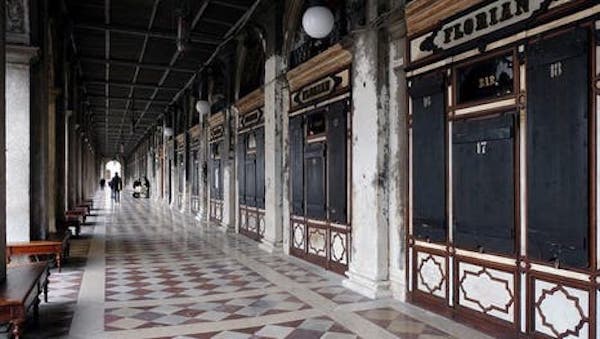
“We’re trying to keep it up, but that’s all we can do right now.” In December, Sacra, a catering company owned by Cafe Flower God, sent a letter of help to the government and the public.
We did everything we could, but where is the government?”
According to the data given by Marco Paulini, the turnover of Huashen Cafe in previous years was $8.5 million, while their turnover was only about 2 million US dollars throughout 2020, while the Italian government gave only 160,000 euros in subsidies.
He told the Italian newspaper Republic: “Is the government kidding us?”
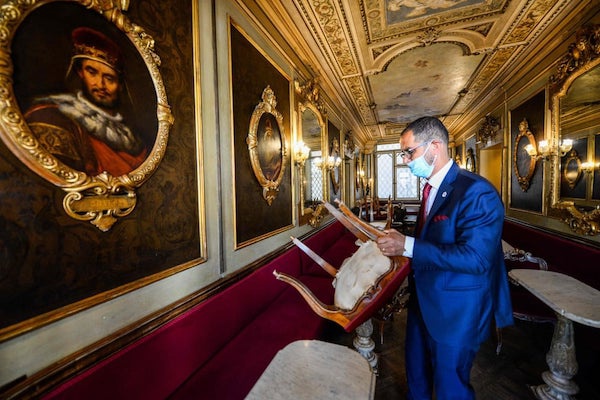
In addition, the Flower God Café also needs to pay the venue rent to the Venetian government every year.
Paulini was very upset, saying that since the pandemic, private owners in Venice have halved rent for tenants, and with tax credits, tenants only need to pay 25% of the original rent, but the government wants the Huashen Cafe to pay the rent in full, as usual, that is, 210,000 euros a year.” I don’t understand. Don’t they know what’s going on now?”
In 2021, the franchise that Flower God Cafe has acquired from the state government will also expire.
Fearing that he could not renew his rent, Paulini did not want to intensify his conflict with the government.
However, he has proposed to re-examine the rent, and some parliamentarians have expressed interest in it.
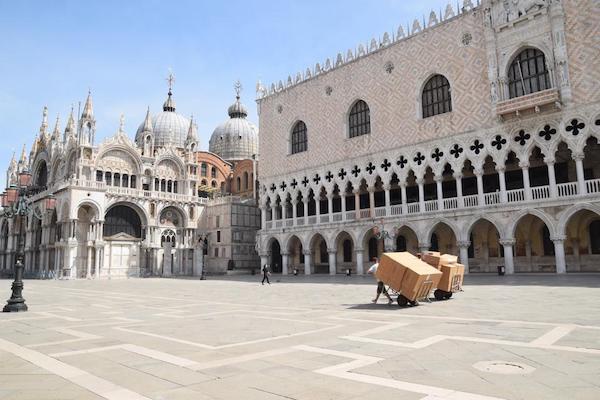
In 2019, due to the flood in Venice, Huashen Cafe has suffered some losses. For example, the cafe lost 200,000 euros because the floor was soaked in water. After that, the government only incurred 20,000 euros.
The decrease in tourists caused by the flood has also made the income of cafes not as good as in previous years. But since Venice cancelled the carnival in February 2020, the expected recovery period of Huashen Cafe has not arrived.
At present, Huashen Cafe also employs 70 employees and 100 part-time employees. The cafe is still paying them as usual, and Paulini hopes to keep their jobs.
“If the cafe of Huashen is closed, we will lose more than just a cafe,” he said. “It will also be an important page in the history of European civilization.”
Legendary Cafe
Paulini did not exaggerate. Dec 3, 2020 Cafe Hana has just been on the Eccellenze del sistema produttivo ed economico (excellent production and economic system) series issued by the Italian Post Office, because it is not only The oldest coffee shop in Italy is also one of the cultural symbols of Venice.
For quite a long time, it was the only coffee shop in Italy that allowed female customers to enter. As a result, cultural celebrities such as Goethe and Casanova have been attracted. Later, more celebrities became its guests, from Byron, Dickens, Nietzsche and Wagner to Chaplin and Andy Warhol.
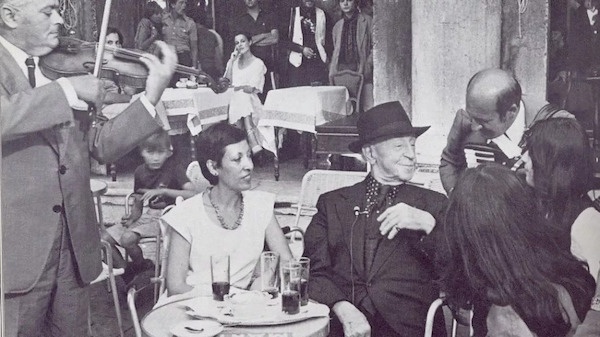
Even the prototype of the Venice Biennial was born in its four halls.
During the French Revolution, Venice was deeply influenced by revolutionary ideas, and the flower god cafe became the gathering place of the Jacobins. In the 19th century, it also played an important role in the unification movement that swept Italy. At that time, Venice was under Austrian rule, and many Venetian patriots often met in the Flower God Cafe.
Later, many of them participated in Venice’s independence struggle. It can be said that Cafe Flower God is not only a celebrity salon, but also an important witness to the historical changes in Venice and even Italy.
Not to mention its glorious history, many tourists are attracted by its magnificent interior decoration. The current cafe retains its 19th-century redecoration, leaving behind the works of the best painters in Venice at that time, such as Antonio Pascuti, Giulio Carlini and others.
In December 1920, in order to celebrate its 200th anniversary, the cafe also unveiled a brand-new hall decorated with the then popular Art Nouveau style.
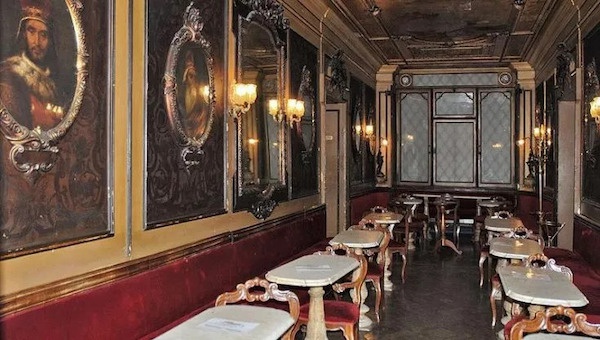
However, for many years, Huashen Cafe has been widely criticized for its too expensive. A cup of hot chocolate alone costs 11.5 euros, which is really shocking. Many people think that it, like many restaurants in Venice, “slashs” tourists at a high price, because most tourists will not come again.
In the summer of 2019, BBC produced and broadcast a food documentary “Remarkable Places to Eat” hosted by famous British chef Fred Sirieix. The first episode went. Cafe Hana, explaining one of the reasons why it is expensive: Cafe Hana God does not have a kitchen inside, but it provides food and drinks with a 56-page menu. These are all done in the kitchen outside the cafe and require someone to carry heavy boxes and walk for 10 minutes to transport.

Under the TV lens, St. Mark’s Square is sunny and tourists are full of tourists. There is no empty table on the terrace of the cafe facing the square. In the interlaced, a small indoor orchestra composed of cello, piano and accordion is performing tirelessly.
This is the most beautiful appearance of Huashen Cafe before the epidemic.
Who can expect the great changes in just half a year later?
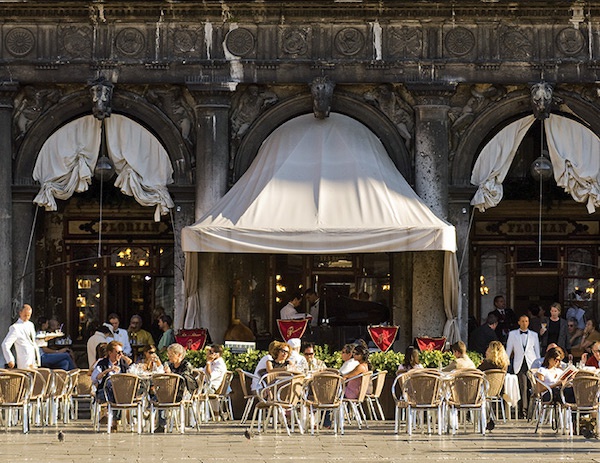
What about Venice in pandemic situation?
Tourism is one of the pillars of Italy’s economy, accounting for 13% of GNP. According to the report of the Italian National Statistical Office, consumer spending will lose 16 billion euros in 2020.
In October 2020, after a brief resumption of tourism for domestic and some EU countries, Italy began the second phase of the lockdown, requiring all bars, cafes and restaurants to close by 6 p.m. every day.
This has also triggered large-scale protests nationwide, some of which have even turned violent.
For Venice, tourism is a double-edged sword. On the one hand, half of the population of this city with a permanent population of 50,000 is employed by tourism, but on the other hand, a city with such a small population has long suffered from overtourism for a long time.
In 2019, the city received 12 million overnight tours. Guest, it’s overwhelmed.
And there are more day-day guests who bring their own dry food, rarely consume and crowd into picnics at scenic spots.
In the same year, the city government of Venice decided to pay tourists tax ranging from 3 euros to 8 euros per tourist from July 2020.
Due to the epidemic, the implementation of this measure was postponed to January 2022.
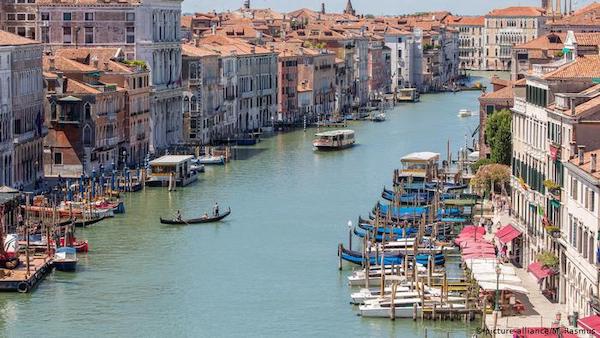
In the summer of 2020, although Venice briefly welcomed tourists, the tourist attractions remained empty compared with previous years. A German tourist told Deutsche Welle that this was his third visit to Venice and found the city “scaringly empty” and restaurant owners complained about no patrons.
He himself was able to take many pictures of the scenery that could not have been taken before, without anyone.
Another Gondora boatman said that he had never seen such Venice in 40 years as a boatman.”
I can only earn one-tenth of the past now.” And many Gondola wharves are no longer open at all. Even if you want to change your job, the boatmen don’t know what they can do.
Besides, what job can you find in Venice, which is almost entirely based on tourism?
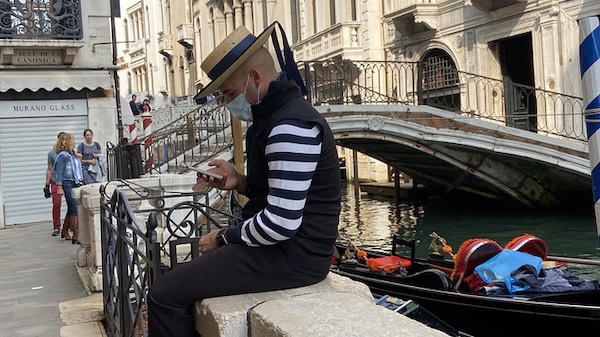
Some tourism practitioners believe that the epidemic may be an opportunity for Venice to find a new and sustainable way of traveling from the mass day trip model that has greatly damaged urban life.
In November, the Italian business association Conesercenti published a study in which the owners of historic cafes, shops and restaurants called for new tourism plans for “art cities” such as Venice and Florence to revive culture and develop technology.
Generally speaking, these cities prefer to welcome tourists who stay for a few more days to travel deeply.
One of the local Venetian architects, Leoni, also believes that Venice has a complete and convenient community living environment, which can fully receive young network workers, so-called “digital travellers”, to work and live here for a short time.
The city government of Venice uses the latest technology to track tourists.
In September 2020, the “Venice Control Room” was put into use. It was originally a warehouse that had been abandoned since the 1960s, but now it is the site of Venice’s “Eye of Heaven”.
The intelligent system in the control room can monitor the height and horizontal position of the tide to decide when to raise the flood barrier when the flood comes.
But more importantly, in this control room, the number, movement, nationality and other information of tourists in any location in Venice are grasped in real time through the smartphone system. ( There were only 97 people in St. Mark’s Square, of whom only 24 foreigners, wrote a report published on CNN on January 13th.
In the future, after the gradual resumption of tourism, the Venetian administration can decide whether to close the main passage to non-Venetian residents according to the real-time number of popular attractions to control the number of “day trips” tourists who have affected the Venetians.
2021 is the 1600th anniversary of the founding of Venice, and this year is destined to be an extraordinary year for Venice.
It remains to be seen what changes will be brought to the ancient city in the post-epidemic era.



